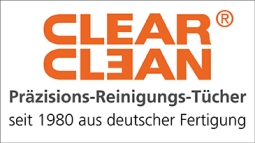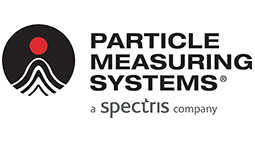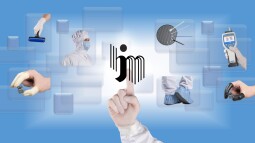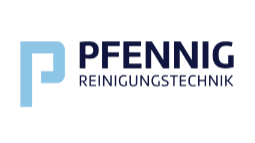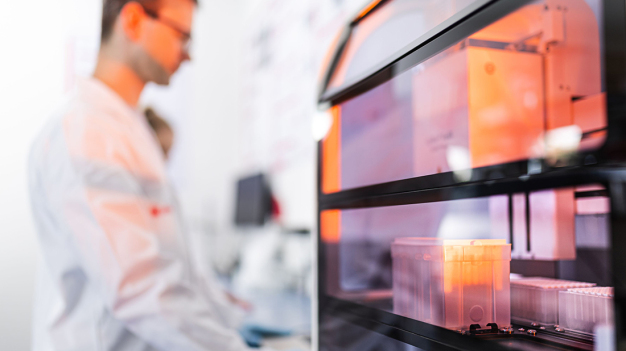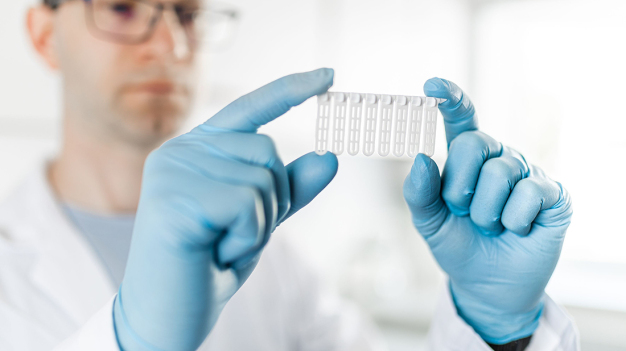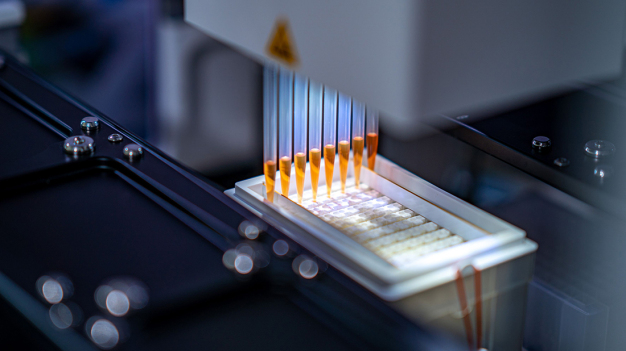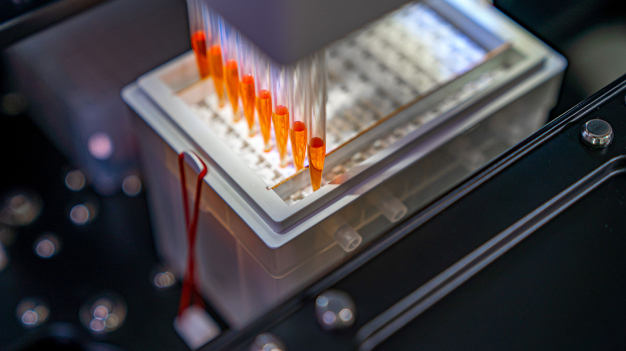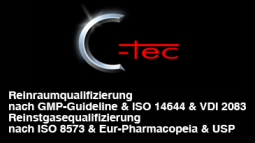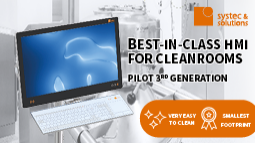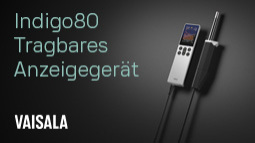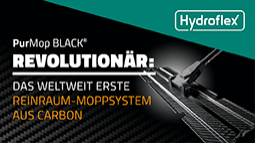- Automation
Turbo for Protein and RNA Purification: Unique Cartridge Design Enables Accelerated Dialysis of Up to 96 Samples Simultaneously
SBS Standard and Optimized Box Design for Use in Liquid Handling Systems
Life sciences, biomedicine, and pharmaceuticals: Protein purification after cell lysis or other substance separations for further in-vitro studies are standard tasks in everyday laboratory work. Dialysis using a dialysis tube has proven indispensable for this purpose. This method allows the gentle separation of low-molecular-weight substances such as salts or nucleic acids from high-molecular-weight sample components like proteins. However, for automated sample processing, dialysis using a dialysis tube is unsuitable. Even with small sample volumes or large numbers of samples, where personnel costs and process duration are decisive cost factors, dialysis using a dialysis tube proves inefficient and time-consuming. The Xpress Dialysis Box (XDB™) from Scienova™ now provides a solution. Individual samples or up to 96 samples can be processed in parallel in the included Xpress Dialyzers™ in cartridge format, significantly reducing workload. The dialysis cartridges' unique, patented design ensures reliable, low-loss sample extraction, even for the smallest sample volumes of just a few microliters. The large buffer reservoir of the XDB™ and the optimized volume-to-surface ratio of the Xpress Dialyzers with short diffusion paths ensure a significantly shortened dialysis duration. The Xpress Dialysis Box provides an efficient and time-saving solution for protein purification in the laboratory, delivering reliable results while reducing costs and effort.
To purify proteins without loss of quality, dialysis is commonly used as a separation method to remove unwanted salts or buffers as a preparatory step before further protein processing. "Although dialysis as a technique is relatively old, it remains one of the gentlest methods for maintaining protein activity in samples," says Dr. Stefan Kreusch, Managing Director of scienova GmbH.
However, this gentle method is time-consuming, inflexible, and labor-intensive in its traditional form. The classical dialysis method using a dialysis tube proves cumbersome and uneconomical, especially for small sample volumes ranging from 10 to 1000 μl and large sample numbers.
To make laboratory dialysis more efficient and improve handling for small and variable sample volumes, scienova GmbH from Jena has specialized in optimizing dialysis. The company offers Xpress Dialyzers in cartridge format for small sample volumes. These dialysis cartridges enable fast and loss-free sample processing and are arranged in a microtiter plate grid (SBS standard). Unlike the conventional dialysis tube method, they are also suitable for automated sample processing. Scienova's latest development, the Xpress Dialysis Box, combines efficient individual cartridges with a large 750 ml buffer reservoir. Compared to conventional dialysis in tubes, which can take several hours, using the XDB™ significantly reduces dialysis time and workload. The information box with an example illustrates the benefits of this innovation.
Patented Design Prevents Sample Loss and Membrane Fouling
The scienova Xpress Dialyzers are single-use cartridges with a high-quality membrane of a defined cut-off. The cut-off, also known as Molecular Weight Cut-Off (MWCO), specifies which molecular size or molecular weight limit a membrane allows to pass or to retain. Larger molecules above a certain molecular weight cannot pass through the membrane, while smaller molecules can diffuse through, separating them from the larger molecules. The required cut-off size of a membrane can vary depending on the application, which is why scienova offers different cut-offs between 2 kDa and 140 kDa.
The patented cartridge geometry achieves a high membrane surface-to-volume ratio, increasing dialysis efficiency. The larger surface allows faster diffusion of small molecules through the membrane. Additionally, the risk of clogging (membrane fouling) is minimized by the vertically aligned membrane, preventing sample components from settling, which could lead to sample loss or reduced dialysis speed. Various cartridge sizes are available for sample volumes from 10 μl to 1000 μl. The Xpress Dialyzer Family includes models such as MD100, MD300, ED300, and MD1000, named after their respective dialysis capacity.
The Xpress Dialyzers are placed in an insert, allowing an entire sample set of up to 96 samples to be positioned into the XDB™ buffer reservoir in a single step. After dialysis is complete, the insert can be easily removed, and the buffer quickly replaced. Buffer exchange can be performed manually or using a peristaltic pump, as the Xpress Dialysis Box is equipped with convenient Luer-Lock connections. The dialysis cartridges are compatible with common laboratory equipment and can be operated with standard pipettes or pipetting robots. A multichannel pipette allows simultaneous loading or extraction of all eight samples in a column. The specially designed openings of the Xpress Dialyzers enable precise and low-loss pipetting using standard pipette tips, even for the smallest sample volumes.
Optimized Handling Enables Broad Application Spectrum
The scienova Xpress Dialyzers are designed for use with various pipetting and laboratory automation systems, as they are compatible with the microtiter plate standard (SBS). Due to this versatility, they are suitable for applications such as high-throughput screening (HTS), scouting experiments, routine analyses in medical laboratories, and RNA oligonucleotide purification. In vaccine development, they can be used to produce antigen variants. "Since many proteins are highly sensitive to environmental factors and their production is complex, we wanted to provide laboratory personnel with an attractive tool that enables simple, safe, gentle, and effective work," explains Dr. Kreusch. In addition to speed, reproducibility without quality loss is also a focus of further development. In the future, sensors can be connected via corresponding interfaces to measure parameters such as temperature and conductivity in the buffer reservoir. This allows real-time monitoring of the dialysis process, enabling easy evaluation of dialysis results, comprehensive data storage, analysis, logging, and detailed documentation.
"With this modern and comprehensive dialysis technology, laboratories not only preserve their resources but also achieve an entirely new level of cost-effectiveness compared to conventional separation methods. Small sample volumes, high sample throughput, and safe handling—no traditional dialysis tube can compete," concludes Dr. Kreusch.
_________________________________
XDBTM, Xpress DialyzerTM , and scienovaTM are trademarks of scienova GmbH, Spitzweidenweg 30, Jena, Deutschland.
Representation of Dialysis Efficiency and Calculation of Time Effort Based on an Example

In the XDB™, 9.6 ml of a potassium chloride-bovine serum albumin solution (KCl-BSA solution) with a concentration of 2 M KCl and 2 mg/ml BSA was dialyzed against 750 ml of distilled water. The dialysis was performed in 12 MD100 cartridges (cut-off 6-8 kDa), with each cartridge containing 8 × 100 µl KCl-BSA solution on a magnetic stirrer, supplemented by a conductivity sensor in the buffer reservoir. The blue line represents the measured conductivity (EC) of the diffused KCl, while the dashed red line shows the calculated percentage of remaining KCl in the dialyzers. The red dots indicate the percentage of BSA in the dialyzer, measured via optical density at 280 nm in a spectrometer. All data are based on three independent trials and are presented with mean values and standard deviations.
Total Duration: The entire process takes approximately 51 minutes.
1. Pipetting the Samples: Using an 8-channel pipette to fill the dialysis cartridges with 96 samples, filling the buffer reservoir, and placing the samples into the dialysis box. Duration: approx. 2 minutes.
2. Dialysis Time: Dialysis until equilibrium is reached. Duration: approx. 45 minutes.
3. Sample Extraction: Removing the cartridge insert and extracting the samples using an 8-channel pipette. Duration: approx. 2 minutes.
Result:
The initial concentration of 2 M KCl in the samples is reduced to approximately 25 mM. By repeating the dialysis through buffer exchange, the KCl concentration in the samples decreases to 0.33 mM.
scienova GmbH
07743 Jena
Germany
